
All categories
Featured selections
Trade Assurance
Buyer Central
Help Center
Get the app
Become a supplier

(4610 products available)



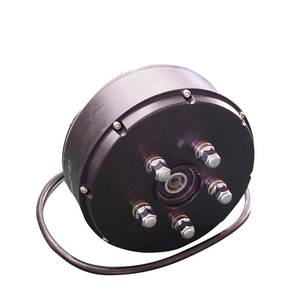





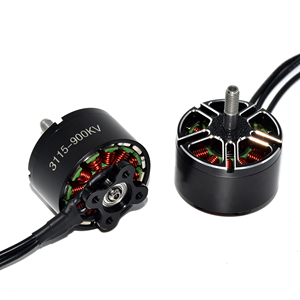











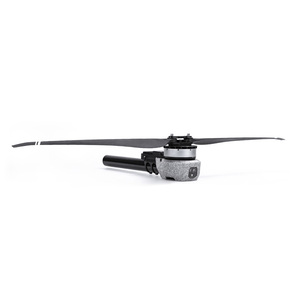

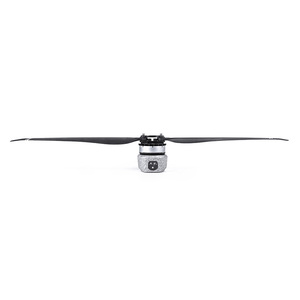


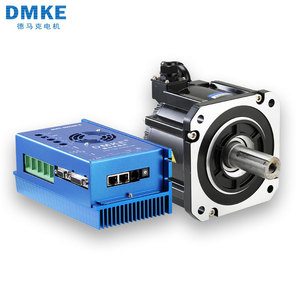

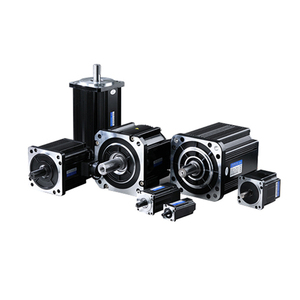
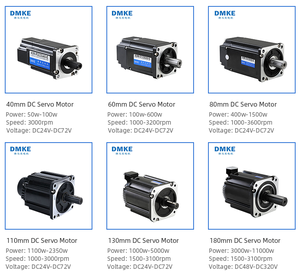







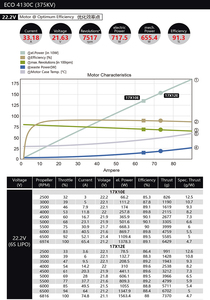












Producing companies have various choices regarding the types of outer rotor motors they can apply in different business settings. These types range from traditional designs to advanced technology.
This section looks at the most common types of outer rotor motors, including stepper, BLDC, and AC induction motors.
Brushless DC motors are among the most common outer rotor motors. In this case, the motor's magnetic field is located on the outside of the rotor, unlike in earlier designs where it was inside. Because of this, the inner rotor is better positioned for the motor's components that need to rotate, such as the arms and commutators.
BLDCs are electronically controlled rather than mechanically brushed. They are popular in many industries because of their efficiency, especially in battery-powered devices. Other advantages include their long lifespan, low maintenance requirements, and smooth torque production. All these benefits explain why many businesses use them in their electronic products.
Stepper motors are the outer rotor motors that move in discrete steps rather than continuous rotation. They achieve this by using an external rotor structure that guarantees the desired positioning and movement. Each step is controlled by sending electrical pulses, which move the motor in fixed angles or steps.
The unique rotor design contributes to precise control requirements, primarily where exact positioning in increments of just a few millimeters is critical.
Step motors are commonly used in 3D printers, CNC machines, robotic arms, and automation systems.
Synchronous motors are another vehicle that utilize outer rotor construction. These motors operate by synchronizing with an external magnetic field instead of the rotor's magnetic field, like induction motors.
They provide highly efficient motion and are primarily used in applications requiring constant speed and precise control. Companies use synchronous motors in industrial applications, including robotics, conveyor systems, and precision manufacturing equipment, to maintain operational accuracy.
AC induction motors are sufficiently proving their suitability, especially for high-power applications. In these motors, the rotor is an outer structure, making it an external rotor motor.
Even though the magnetic fields are not physically connected, the current induced in the rotor causes it to rotate within the magnetic field of the stator. These motors are valued for their robustness.
Durability is one of the most critical factors in selecting an outer rotor motor for business applications. Operating in severe or tricky conditions requires materials that will not wear or degrade quickly. This section focuses on the different materials used to make outer rotors and how they affect durability.
The outer case of an outer rotor motor is crucial to its performance. Common materials for this include aluminum, steel, and reinforced plastics.
Aluminum is lightweight, non-corrosive, and can dissipate heat, making it suitable for many applications. Aluminum is also commonly used in automotive parts. Steel offers higher strength and rigidity for applications that require stringent mechanical limits. Steel may corrode if the application is exposed to moisture or chemical agents.
This plea forces users to choose either stainless steel or other corrosion-resistant alloys. Reinforced plastics are also alternatives in conditions requiring less weight and moderate mechanical protection.
Heat generation is typical in all motor operations. The amount particularly varies depending on the application. That means automotive and aerospace industries will encounter more heat, while electrical gadgets will not.
It's not surprising that heat can affect the performance and longevity of a motor. That's why users need outer rotor motors made with materials that will not easily degrade in high-temperature environments. Some of these materials include high-temperature plastics and specialized metal alloys.
Some applications may expose outer rotor motors to dust, debris, or abrasive materials. In these situations, wear-resistant materials are critical to maintain motor function. One example of these materials is hard coatings like nickel plating or ceramic.
They are used on components such as bearings and rotors to protect against wear and extend the motor's life. These coatings are used in extreme environments where the likelihood of mechanical damage is very high. They are also frequently seen in mining and construction equipment.
Outer rotor motors may require protection against water and dust ingress for applications in outdoor environments or where exposure to liquids and dust is probable. Motors with an IP (Ingress Protection) rating of IP55 or higher are suitable for such environments. These ratings show how effective a product is against dust and water penetration.
IP65 and IP67 ratings protect against temporary immersion and are frequently used in motors for agricultural machinery and outdoor construction equipment.
Businesses deploy outer rotor motors for various uses due to their high efficiency, compactness, and vast versatility. As mentioned earlier, these motors are also known as external rotor motors.
Like other equipment in the same category, they are critical components in multiple industries. Manufacturers especially use them to produce equipment in bulk for the following applications.
Precision and dependability are critical in this field, and outer motors have proven their ability here. Owing to their high torque per weight ratio and compact size, these motors are ideal for driving robot arms, joints, and other moving parts.
In fact, they control motion within tight space limitations. It's indisputable that these motors ensure robots perform their tasks, which is why companies in this space rely on them. They also use them in assembly lines, inspection systems, and other automated manufacturing components.
Manufacturers use outer rotor motors in medical gadgets that demand precise, reliable operation in limited spaces. For instance, the motors move pumps, ventilators, surgical robots, and other crucial medical monitoring and diagnostic devices.
In this environment, accuracy and dependability are everything. Further, outer rotor motors also provide low heat generation. They also ensure the motors operate for extended periods without affecting the surrounding environment.
Manufacturers widely use outer rotor motors in the fast-rising electric bikes and vehicles space. That's due to their efficiency and high energy utilization. It makes them ideal for battery-powered systems, where every watt counts towards range and performance.
The motors also have a compact design, which is a plus for e-bikes and compact scooters. These machines still require lightweight components. Since the demand for electric mobility is high, businesses in this space need reliable outer rotor motors to meet the growing demand.
Manufacturers use outer rotor motors to drive fans, blowers, pumps, and other components in industrial machines. They rely on them because of their efficiency and capability of handling high loads.
These components perform adequately even in the most troublesome environments. No wonder they are the go-to solution in industries like chemicals, mining, and metallurgy. The outer rotor motors endure temperature extremes. They also provide consistent operation in challenging conditions, which improves their commercial value.
Buyers must consider various factors when selecting the right outer rotor motor for their clients. These factors range from application requirements to technical specifications. One must also consider the customer support and warranty offerings. Here are some key considerations to remember.
It's vital to consider the customers' specific needs. For instance, they need precise control and high torque for robotics and automation. Outer rotor motors with advanced electronic control features will do the trick.
Those in electric vehicles and e-bikes should look for energy-efficient motors. Furthermore, large industrial users may want components that can handle high loads to secure smooth operations.
Some businesses may need to add gearboxes to their outer rotor motors. The gearbox choice can significantly affect performance, mainly by altering torque and speed ratios.
Moreover, reducing the motor's size may allow it to fit in applications with limited space. But that's not all. Gearboxes with efficiency-reducing features can help cut energy expenditure.
Considerations of energy efficiency can help users reduce operating costs while contributing to sustainability goals. Outer rotor motors with high-efficiency ratings will be perfect since they consume less power without sacrificing performance.
This point is especially vital for clients in electric mobility and renewable energy applications. It's worth noting that energy-efficient motors can lower utility bills while helping industrial users cut down their carbon emissions.
Buyers must assess each motor's technical specifications before purchasing them to satisfy their clients' requirements. These specs include power output, operational speed range, and duty cycle.
So, ensure to compare these key specifications across various motors, as they significantly impact the performance of different applications. For instance, a motor with the perfect speed range can guarantee clients will achieve smooth operations for their equipment.
Finally, evaluating commercial clients' customer support and warranty policies is critical for long-term satisfaction. Quality assurance services will help reduce downtime and maintenance costs. The same applies to warranty offerings.
So, check for motors with extended warranties, as they'll give the users much-needed peace of mind while protecting their investments.
A1. Yes, each motor's torque rating determines whether it can work well in a given situation.
A2. Queue maintenance practices will depend on the materials the motor components are made of. For instance, brushless motors will have lower maintenance needs than brushed ones.
A3. Outer rotor motors are very energy-efficient. Their designs allow them to give high torque while using less power. This efficiency makes them ideal for battery-driven gadgets like electric bikes and cars.
A4. There are no global standards for sizing these motors. However, manufacturers ensure to keep some key specifications the same.
A5. These motors are crucial to wind turbines. They confidently convert kinetic energy into electrical power. Their durability and efficiency also make them ideal for unreliable environments.